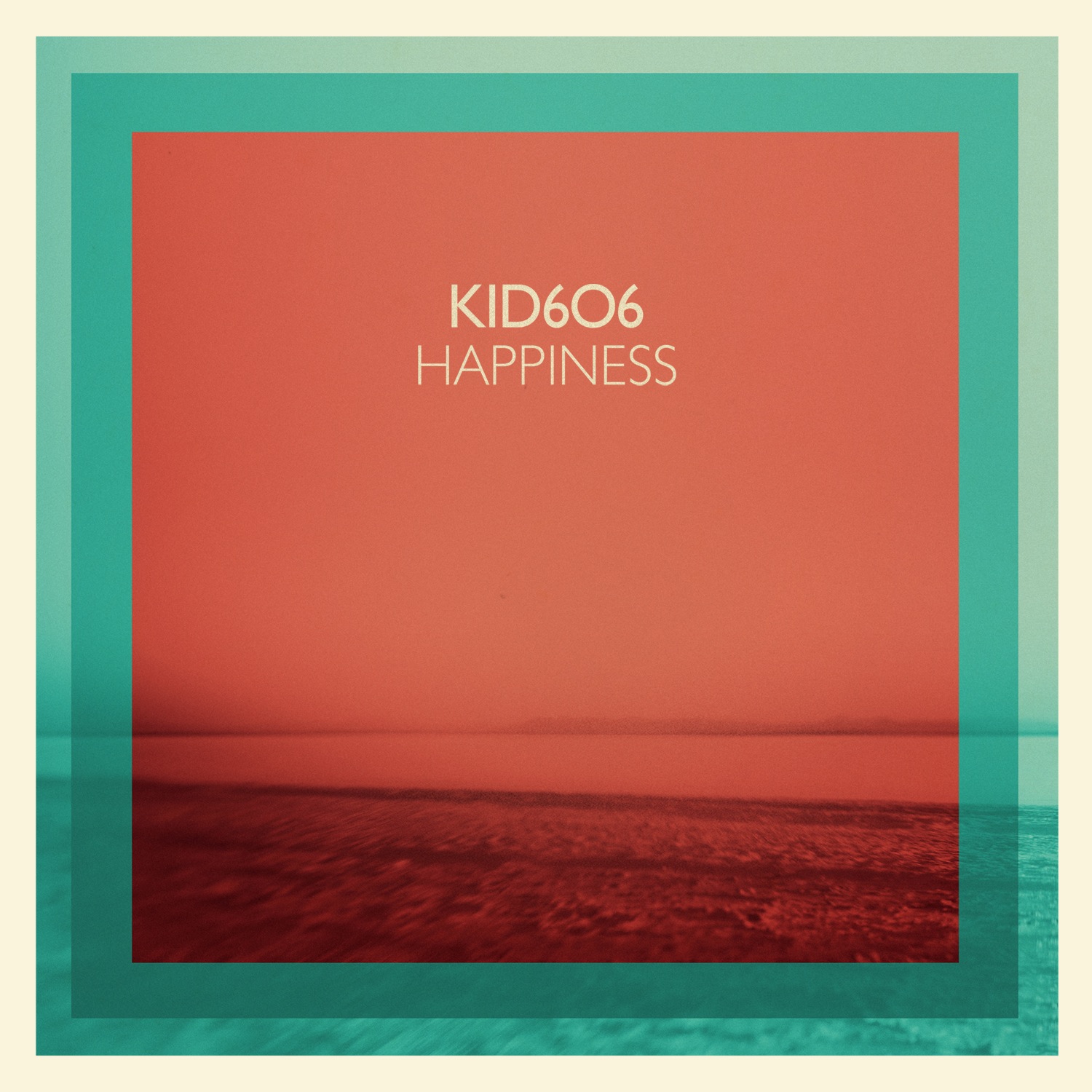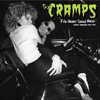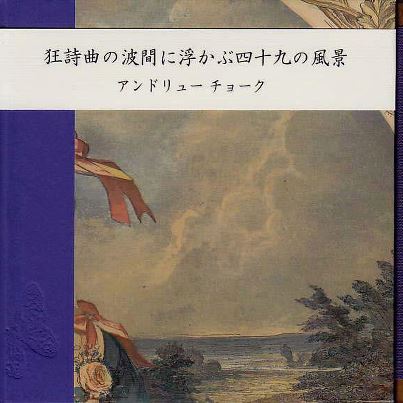 Kid606 has never quite fit into a particular narrative as an artist, which I have always felt was the strongest attribute to surviving as an electronic producer in the flooded market of similarly supertalented electronic producers. Equally brooding, romantic, humored, and flat-out destructive, Miguel De Pedro makes no effort to coordinate releases, or to eschew the fleeting moods and odd moments that fill any life of a grown adult and derive inspiration from any and all of them. Happiness is another one of his "heart on sleeve" albums, full of airy downtempo compositions similar to P.S. I Love You or Resilience, which means that fans of the softer end of his catalog will probably love it and fans of hyperactive scene destroying genius nonsense (myself included) will mostly only tolerate it.
Kid606 has never quite fit into a particular narrative as an artist, which I have always felt was the strongest attribute to surviving as an electronic producer in the flooded market of similarly supertalented electronic producers. Equally brooding, romantic, humored, and flat-out destructive, Miguel De Pedro makes no effort to coordinate releases, or to eschew the fleeting moods and odd moments that fill any life of a grown adult and derive inspiration from any and all of them. Happiness is another one of his "heart on sleeve" albums, full of airy downtempo compositions similar to P.S. I Love You or Resilience, which means that fans of the softer end of his catalog will probably love it and fans of hyperactive scene destroying genius nonsense (myself included) will mostly only tolerate it.

Jason Urick's second full-length for Thrill Jockey is an enigmatic and confounding one, as many elements of his laptop-based soundscapes rival the work of higher-profile kindred spirits like Tim Hecker.  However, his ingenious and unconventional production talents are somewhat undercut by a strange obsessiveness (which extends even to the title, as Urick was fixated on Marco Ferreri's 1986 film of the same name while working on the album).  That curious combination makes for a simultaneously striking and uneasy listening experience.
 Mixing a fistful of covers with the band’s own original songs, this compilation shows the group at the peak of its messy adolescent period (which they fortunately never grew out of). Everything that made The Cramps one of the most perfect rock groups of all time is here; they were primitive, sexy and gloriously out of time with everyone but themselves. Their music penetrates my brain like a bolt of electricity from Dr. Frankenstein’s lab and I don’t think these songs have ever sounded any better.
Mixing a fistful of covers with the band’s own original songs, this compilation shows the group at the peak of its messy adolescent period (which they fortunately never grew out of). Everything that made The Cramps one of the most perfect rock groups of all time is here; they were primitive, sexy and gloriously out of time with everyone but themselves. Their music penetrates my brain like a bolt of electricity from Dr. Frankenstein’s lab and I don’t think these songs have ever sounded any better.
 The ringing of the bells and the long carrier tone that eventually emerges beneath it signals the beginning of a descent into the underworld. Two tracks on each side carry me down an icy river of song. The ingredients are minimal, but a good cook can do a lot with just a few things, and I never felt heavy or gross from a cluttered presentation or an over-saturation of fatty content. This sonic fuel burns clean. And like any good meal the nourishment derived from the listening experience strengthened my nervous system, while none-the-less tuning it to alien frequencies. Here is an example of automatic music, and the methodology produces similar unconscious material as that evoked in automatic writing. It all makes for a fascinating foray into electronica as prepared by such experienced exemplars of the craft as Drew McDowall and Tres Warren.
The ringing of the bells and the long carrier tone that eventually emerges beneath it signals the beginning of a descent into the underworld. Two tracks on each side carry me down an icy river of song. The ingredients are minimal, but a good cook can do a lot with just a few things, and I never felt heavy or gross from a cluttered presentation or an over-saturation of fatty content. This sonic fuel burns clean. And like any good meal the nourishment derived from the listening experience strengthened my nervous system, while none-the-less tuning it to alien frequencies. Here is an example of automatic music, and the methodology produces similar unconscious material as that evoked in automatic writing. It all makes for a fascinating foray into electronica as prepared by such experienced exemplars of the craft as Drew McDowall and Tres Warren.
 The final part of the X-TG story is แฝดนรก (Faet Narok), a bonus "dark" version of Desertshore that comes as a download with the special edition of Desertshore/The Final Report. It is quite different from Desertshore even though it follows the same layout as the main album. The bonus album’s title roughly translates from Thai into "double hell," but the music is far from hellish, indeed it may be darker but it is nicely soporific and ambient. The vocals are treated and pushed into the music, becoming part of the sound rather than becoming background detail. Antony’s voice becomes a plaintive call from behind the veil, Bargeld’s a polyglot babble of madness. Even Grey and Noé sound much better here as disembodied forms than they do in the "proper" versions.
The final part of the X-TG story is แฝดนรก (Faet Narok), a bonus "dark" version of Desertshore that comes as a download with the special edition of Desertshore/The Final Report. It is quite different from Desertshore even though it follows the same layout as the main album. The bonus album’s title roughly translates from Thai into "double hell," but the music is far from hellish, indeed it may be darker but it is nicely soporific and ambient. The vocals are treated and pushed into the music, becoming part of the sound rather than becoming background detail. Antony’s voice becomes a plaintive call from behind the veil, Bargeld’s a polyglot babble of madness. Even Grey and Noé sound much better here as disembodied forms than they do in the "proper" versions.
 Beginning life as a Throbbing Gristle album back in 2007, this cover album of Nico’s Desertshore has had a tumultuous life. Its four parents went through a divorce when Genesis P-Orridge left the group in 2010 before unexpectedly losing Peter Christopherson a month later. Desertshore was Sleazy’s baby but Chris Carter and Cosey Fanni Tutti have done their best to foster it and give it the chance it deserved. The end results are unsurprisingly mixed, the range of guest vocalists that have replaced P-Orridge are varied in background and skill which has not served the source material well but taken as a whole with its sister albums, The Final Report and แฝดนรก (Faet Narok), this is as good an ending to Throbbing Gristle/X-TG as possible as well as being a fitting tribute to Sleazy and his work.
Beginning life as a Throbbing Gristle album back in 2007, this cover album of Nico’s Desertshore has had a tumultuous life. Its four parents went through a divorce when Genesis P-Orridge left the group in 2010 before unexpectedly losing Peter Christopherson a month later. Desertshore was Sleazy’s baby but Chris Carter and Cosey Fanni Tutti have done their best to foster it and give it the chance it deserved. The end results are unsurprisingly mixed, the range of guest vocalists that have replaced P-Orridge are varied in background and skill which has not served the source material well but taken as a whole with its sister albums, The Final Report and แฝดนรก (Faet Narok), this is as good an ending to Throbbing Gristle/X-TG as possible as well as being a fitting tribute to Sleazy and his work.
 Released alongside Desertshore is the one and only original album by X-TG, The Final Report. Its title is obviously a nod to the various reports (final or otherwise) released by Throbbing Gristle in their lifetime and it is hard not to consider X-TG except as a continuation of Throbbing Gristle. As such, it is no shock that The Final Report is not a million miles away from the music explored on Part Two: The Endless Not nor The Third Mind Movements. The latter album in particular is a fitting reference point for two reasons: firstly, it was mainly the work of Chris, Cosey and Sleazy (i.e. X-TG) and secondly, it was made using the original Throbbing Gristle recordings for Desertshore as its source material. Much like The Third Mind Movements, The Final Report feels more alive and vibrant than Part Two did. The jams flow naturally and it sounds like a group enjoying each other’s company. Whether it redefines the musical landscape like The Second Annual Report or D.O.A. is another matter entirely but it certainly is a great album to listen to.
Released alongside Desertshore is the one and only original album by X-TG, The Final Report. Its title is obviously a nod to the various reports (final or otherwise) released by Throbbing Gristle in their lifetime and it is hard not to consider X-TG except as a continuation of Throbbing Gristle. As such, it is no shock that The Final Report is not a million miles away from the music explored on Part Two: The Endless Not nor The Third Mind Movements. The latter album in particular is a fitting reference point for two reasons: firstly, it was mainly the work of Chris, Cosey and Sleazy (i.e. X-TG) and secondly, it was made using the original Throbbing Gristle recordings for Desertshore as its source material. Much like The Third Mind Movements, The Final Report feels more alive and vibrant than Part Two did. The jams flow naturally and it sounds like a group enjoying each other’s company. Whether it redefines the musical landscape like The Second Annual Report or D.O.A. is another matter entirely but it certainly is a great album to listen to.
 Although this record is a compilation of 12" singles and unreleased tracks, that should do little to dissuade anyone from conceiving of it as an album. Released on Kieran Hebden's own Text imprint (which has seen little activity until recently), Pink carries with it the indelible stamp of a Hebden release, with all the affects and nuance that name suggests. That it was culled from entirely different releases but still fits together is a testament to Four Tet's unique musical identity.
Although this record is a compilation of 12" singles and unreleased tracks, that should do little to dissuade anyone from conceiving of it as an album. Released on Kieran Hebden's own Text imprint (which has seen little activity until recently), Pink carries with it the indelible stamp of a Hebden release, with all the affects and nuance that name suggests. That it was culled from entirely different releases but still fits together is a testament to Four Tet's unique musical identity.
 By cultivating a garden of ambient vignettes, Andrew Chalk brings his usually sprawling soundscapes into precise focus, never allowing anything to repeat itself too deliberately. Forty-Nine Views is a wistful record of fractured memories; brief glimpses into a surreal world triggered by a collection of electronic melodies and effects, each song distinct in small degrees.
By cultivating a garden of ambient vignettes, Andrew Chalk brings his usually sprawling soundscapes into precise focus, never allowing anything to repeat itself too deliberately. Forty-Nine Views is a wistful record of fractured memories; brief glimpses into a surreal world triggered by a collection of electronic melodies and effects, each song distinct in small degrees.
 I had a very hard time understanding the disproportionate amount of excitement surrounding last year's Pass Me By and We Stay Together EPs, but I have since come around a bit: there are definitely a couple of areas in which Stott truly excels.  In many respects, Luxury Problems essentially picks up exactly where those releases left off, but there is one massive curve-ball: the addition of vocalist Alison Skidmore.  That particular innovation turns out to be a mixed success, but overall the highlights are both more impressive and more frequent this time around.
I had a very hard time understanding the disproportionate amount of excitement surrounding last year's Pass Me By and We Stay Together EPs, but I have since come around a bit: there are definitely a couple of areas in which Stott truly excels.  In many respects, Luxury Problems essentially picks up exactly where those releases left off, but there is one massive curve-ball: the addition of vocalist Alison Skidmore.  That particular innovation turns out to be a mixed success, but overall the highlights are both more impressive and more frequent this time around.



